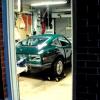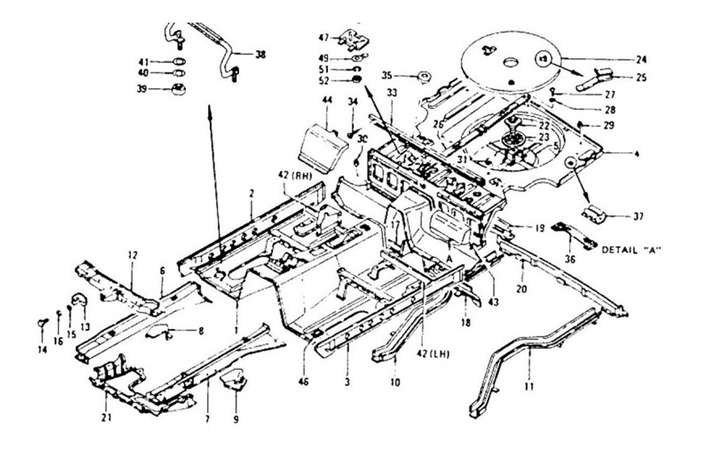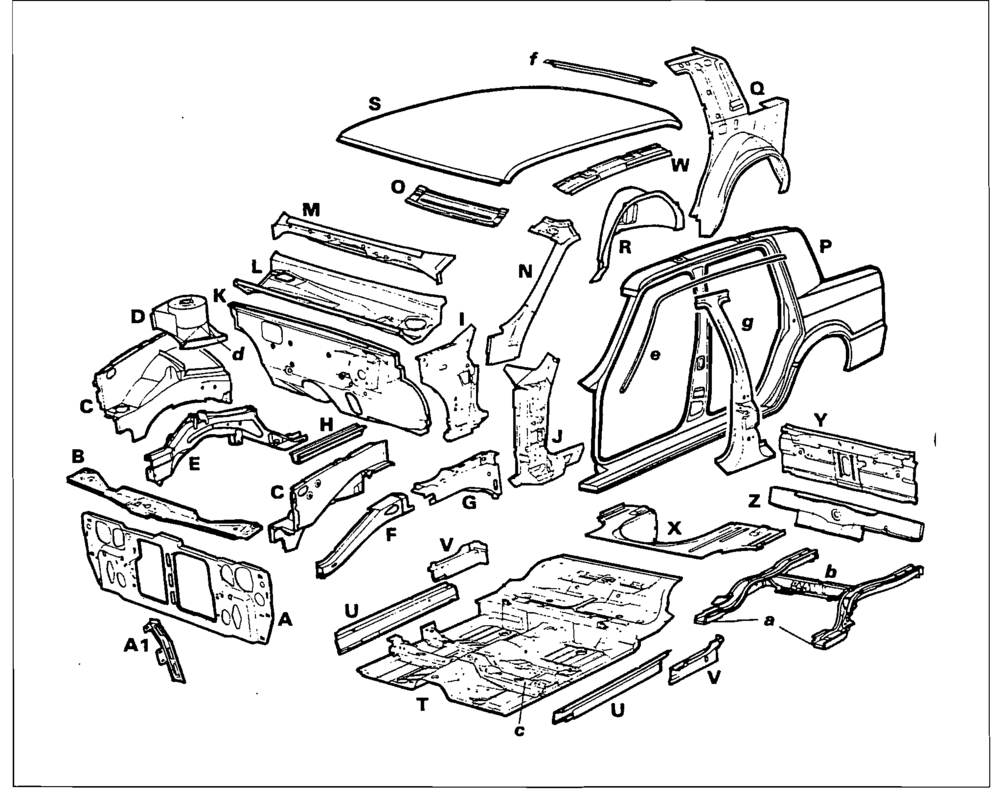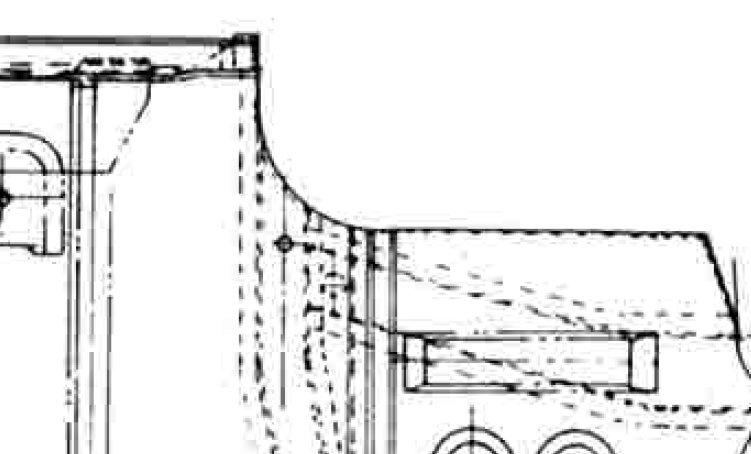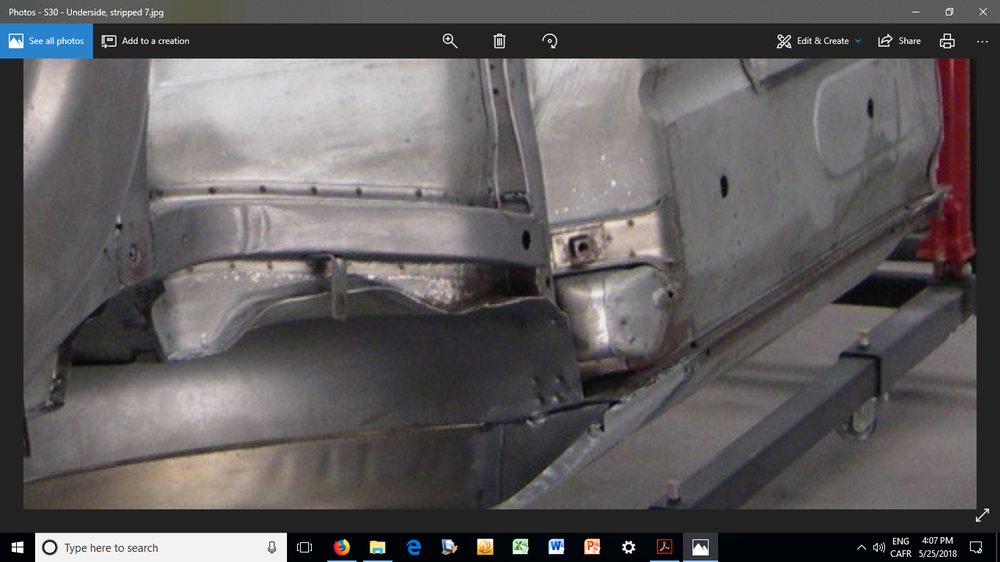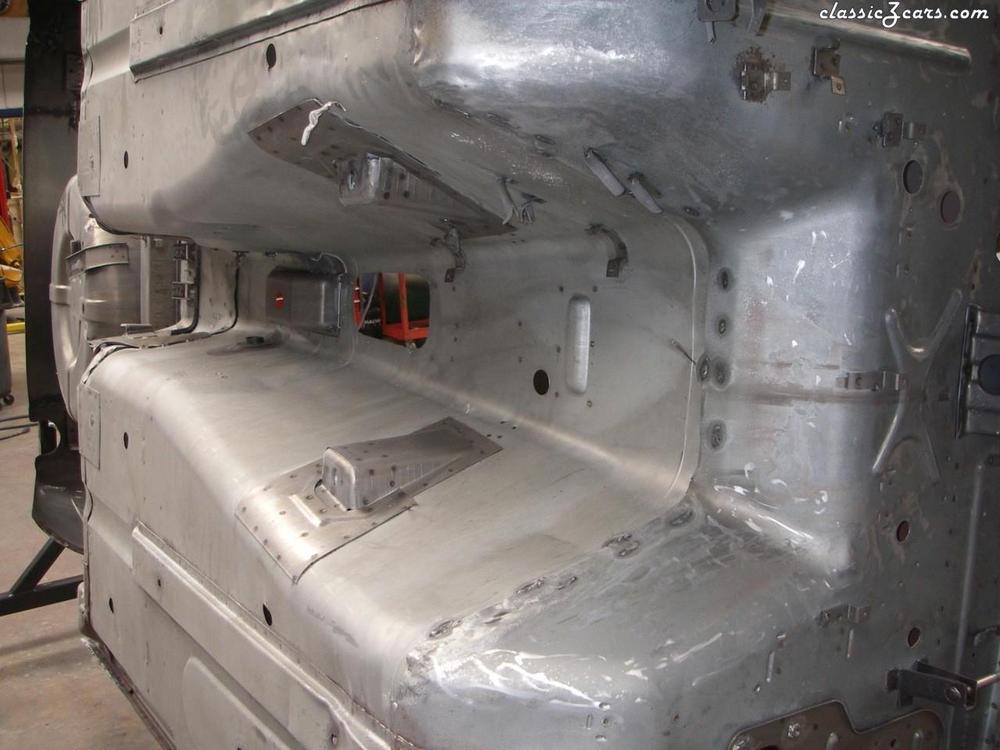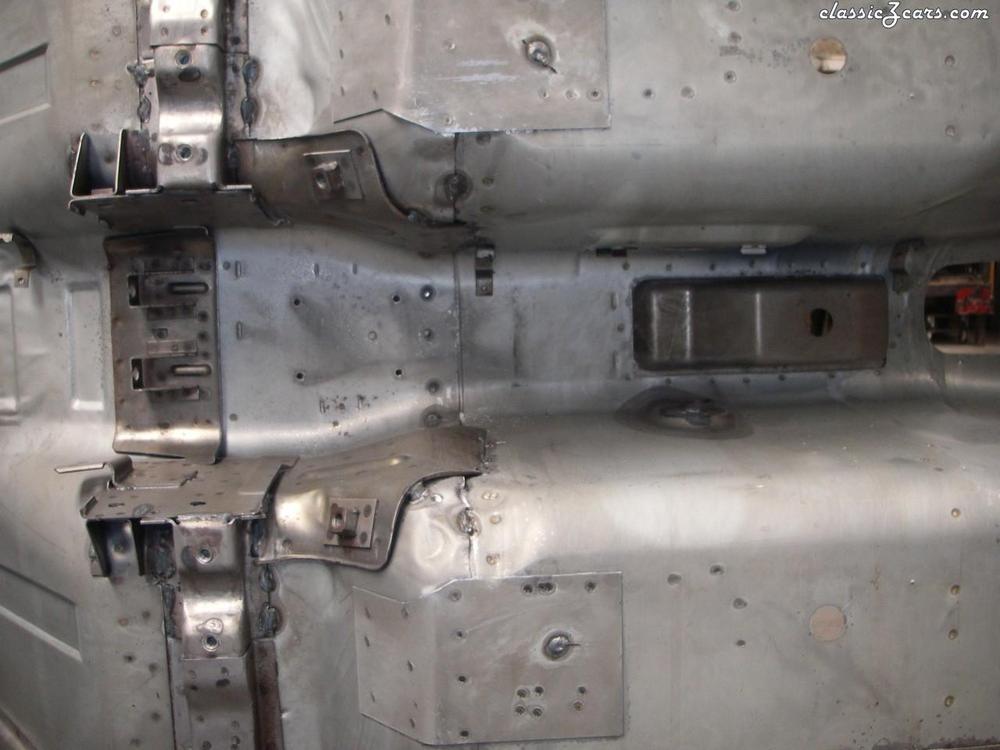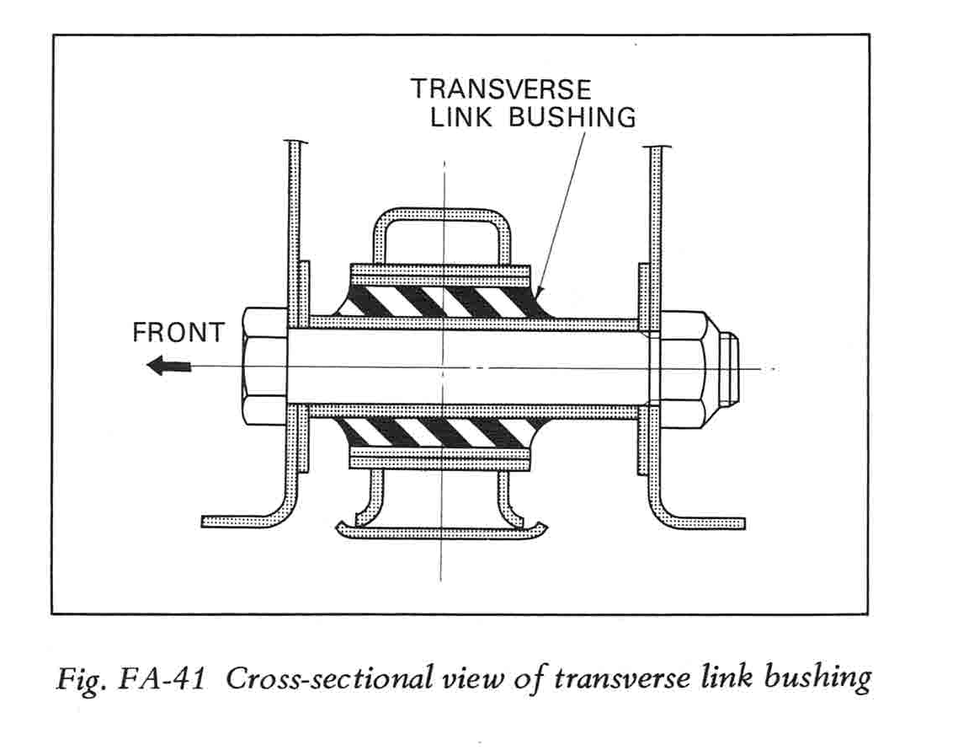Everything posted by Namerow
-
Discussion on idea for "air horn" fix
The 'air horns' (aka 'over the wheel air things') are apparently known in more polite circles as the 'upper beams'. I suppose the ones on the bottom should therefore be called the 'lower beams', but we've all decided to keep calling them 'frame rails', because that's what they were/are called in body-on-frame designs ('side rails'). I'm pretty sure that these beam stampings were made from extra-heavy-gauge steel. In fact, I've got a dimension of 0.054" in my notes (with a credit to Z-guru, Carl Beck). That's at least 18 gauge (maybe 16), so considerably beefier than the wimpy 0.032" / 20 gauge stuff used on the exterior panels. Remember that these upper beams take most of the vertical loads from the suspension, so there's a reason why they need to be strong. According to Carl, the wall thickness of the lower rails is a bit less, at 0.050". Maybe someone else can confirm or correct on these panel thickness numbers? It would probably be tough playing panel-beater with 16 or 18 gauge. Maybe -- as Grannyknot suggested earlier -- you could fabricate the piece from a set of smaller pieces. I'm thinking bent-to-shape vertical strips (2" wide?), tack-welded together into a final form. Maybe make a wood buck, then lay in the strips, one after another, bending in-place and then tack-welding as you go along. To make it easier, you could perhaps used 20-gauge and then lay some lengthwise gusset strips along the inside surfaces to add some bending strength. Whatever you do, remember to post some pictures for the rest of us to look at.
-
Discussion on idea for "air horn" fix
Hi Elliott: Hope this note arrives in time to be useful... Your comment about your shock towers measuring at 906mm separation distance caught my attention, so I asked a few other CZCC members offline if they'd mind measuring that distance on their own Z's (none of which have experienced any collision damage). I've received 4 measurements: Owner #1 - 240Z: 905mm (measured between the centres of the shock tower cover 'buttons') Owner #1 - 280Z: 906mm (ditto) Owner #2 - 280Z: 905mm Owner #3 - 280Z: 916mm (measured to the centres of the top surfaces of the strut rods) All three are well-known and well-respected members of the CZCC community (they can self-identify if they want), so I trust their measurements. You can make of this what you will. To me, it suggests that the factory may not have been that successful in assembling the cars to meet this particular part of the dimensional design spec. I've done a lot of reading on unibody structures over the past few weeks and it appears the manufacturing tolerances of +/-3mm were accepted on 'long' dimensions like this in the 1960's and 1970's. That would allow a car with a 910mm shock tower separation to pass inspection on the line. That said, we now have three cars that measure 6mm - 7mm under design spec. i.e. 100% more than 'acceptable'. What does the distance between the front shock towers affect? The obvious answers are: 1) suspension camber angles, and; 2) hood-to-fender bodyline gaps. Camber Angles: A 3mm inboard movement of the top of the suspension struts amounts to 1.5mm on either side. That gets played out over a strut length of about 250mm. So -- if my grasp of high school geometry hasn't slipped too badly -- that's the equivalent of adding 0.35 degrees of camber on either side. Double that, to 0.7 degrees, if the shock tower separation is 6mm under spec. I've read that most passenger cars with strut-type front suspension run a static camber setting of between 2 - 3 degrees (positive). My feeling is that making that less positive by 0.35 - 0.7 degrees isn't going to affect the car's road manners that much. Of course, if the change in the shock tower separation is the result of accident damage that plays out on only one side of the car (i.e. one of your towers has moved inboard by 7mm), then you can double all of these numbers. Hood-to-Fender Panel Gap: Based on visual evidence, 1/8" to 3/16" seems about right. That would be 3mm - 5mm, so 4mm nominal. The width of the hood outer stamping is probably going to be consistent to +/- 1mm from one car to another. If 913mm really is the target, then regular production tolerances ( +/- 3mm) would allow this to be under by 1.5mm on each side. Combined with a hood that over-spec in width by 1mm (or 0.5mm on each side), then the hood-to-fender gap would shrink from the nominal 4mm to 2mm. That's about as tight as you'd want to get for these cars. If the shock tower separation distance is only 905 - 906mm, that implies that the hoods for Owner #1 and Owner #2's cars won't be able to close without hitting the fenders. But they do. And that makes me wonder whether the FSM design spec of 913mm is either wrong, or was purposely published at the high end of 'tolerable' so that there would never be hood closure problems (i.e. the spec should really be read as '913mm, +0 / -6'... or maybe +0 / -8). For purposes of what you're doing to get your Z back on the road, my thinking is that you may not need to bother spreading the tops of the shock towers apart in order to be assured that the hood will close. In fact, that may end up simply generating extra-wide gaps between the fenders and the hood edges. From the evidence of the measurements supplied by Owner #1 and Owner #2, we seem to have some degree of assurance that your hood will close just fine with your shock towers sitting at their current separation distance of 906mm. Your call, though.
-
S30 Frame Construction
Here`s a more complete illustration of the set of panels that make up a typical unibody structure (not a 240Z, but remarkably close)...
-
Discussion on idea for "air horn" fix
Wins my vote for, 'Reply of the Year' . Hope you didn't take my 'Porsche' comment the wrong way. I am always impressed by this type of 'git 'er done' resourcefulness and outside-the-box thinking. As for the 2mm-wall steel tubing, there was a day when almost all cars were body-on-frame and the concept of, 'crush zones' didn't exist. As you correctly point out, the only person possibly at risk here is you (and your passenger). Keep us posted on your progress. I'm learning a lot from the solutions you're developing along the way.
-
Discussion on idea for "air horn" fix
Resourceful and fearless. Thanks for the pix. Red Green would be proud. It's a good thing that there aren't any Porsche types on this site. They'd be apoplectic after seeing this kind of solution! Speaking of 'resourceful', my old friend Kees Nyrop (Porsche hero and past winner of the Sebring 12 Hour race -- you can look it up) is also a 240Z fan and built a rotisserie for his restoration out of lumberyard wood. He lives in Kelowna.
-
Discussion on idea for "air horn" fix
Solution is simple: Don't get in a front-end collision . I'm curious to learn more about how you braced the car in the vertical direction before you jacked up the low side.
-
Discussion on idea for "air horn" fix
If and when you do any pulling to take out the twist, here are some safety tips that I found online. They're not all appropriate to a unibody repair or to the type of repair you're going to attempt, but they'll give you something to think about... Inspect clamps and chains before each use. Wrap chain around a frame member several times. Do not twist the chain. Place padding around sharp corners of frame members that rub against the chain links. Ensure that the chain hook is connected to a link with a firm grip. Test it before applying tension or hydraulic pressure. Place a heavy blanket over the chain and clamp before pulling to minimize fly-back if the chain breaks. Stand to one side of the chain, not behind it. Stand behind a strong acrylic plastic or safety glass shield during all but the lightest pulls. Use two or more chains for pulls that require a great deal of force. Reinforce weak parts before pulling. Check the level of hydraulic fluid. Inspect hoses and connections frequently for leaks and general condition. Screw all body attachments (clamps or hooks) on tightly. Avoid damaging threads on the attachments. Replace damaged links with same quality and size of link. Do not use temporary threaded links for high stress applications. Teeth of clamps need to be clean and dry. Inspect clamps and chains for wear. Replace clamps that have worn teeth. Replace the chain if it is nicked or otherwise damaged. Make sure the chain is rated for the intended pulling force, including a large safety factor. Remove all undercoating where the clamp is attached. Before attaching the clamp to a rusted panel, tack weld a metal brace to the panel for support. Have the vehicle on its wheels or bolted to mobile safety stands when pulling. This prevents the vehicle from falling off the stand during the pull.
-
Wheelbase predicament
Charles: Would you mind also measuring between the centre of the front shock towers, if convenient? FSM says 913mm. Interesting that your measurement of the pinchweld separation distance (51.25" = 1302mm) is smaller, rather than larger, than the 1326mm value I got from scaling off a screen blow-up the FSM diagram. The difference is almost exactly 1.0"... which makes me suspicious.
-
Wheelbase predicament
Nope. I think the 'C' point is something that you have to mark for yourself, based on the visual info inferred (implied?) by the FSM diagram. It seems to be in line with the outboard wall of the longitudinal rear sub-rail where that rail ties into the front transverse sub-rail, and then positioned dead-centre on the front transverse sub-rail. Note that there is a hole (factory-punched) in the transverse rail in that vicinity, but it sits about 1/2" outboard of the location that the FSM diagram suggests. Who knows? Maybe the punched hole is the C-point. It would certainly serve quite nicely for purposes of fore-aft measurements, but it would be off a bit for width-wise and diagonal measurements. See pix below (and, again, apologies to the unknown owner of the newest photo I'm about to post):
-
Wheelbase predicament
That's an interesting measurement. My initial thoughts are: It's hard to believe that the LHS and RHS pinch weld lines weren't designed to be anything other than parallel. Proving that with 100% accuracy is another matter, of course, because we have only the FSM 'Standard Body Dimensions' diagram as a reference and it doesn't even specify the left-to-right separation distance of the pinch weld lines. I've just tried doing a blow-up of the diagram on my screen, so that I could scale off the separation distance and compare it to a marked measurement. I get 1326mm. The accuracy of a derived measurement like this is probably +/- 2mm. Still doesn't solve your predicament. How do you find a centreline for a unibody? That's a great question. It would be nice if the design included an alignment hole at the front and the rear -- but it doesn't. At the back, you have the two 'C' holes drilled into in the rear sub-frame piece. Plumb those two, then measure and mark a centrepoint. At the front, however, you don't really have anything obvious to work from. Whatever you choose, you need to make sure it's not compromised by any of the collision damage -- everything ahead of the firewall probably needs to be treated as suspect. Finding the mid-point between the pinch weld strips under the front edge of the doors might be as good a reference as any. Collision repair sources say that "3mm" is the accuracy that they shoot for. I believe that, in practice, this means they work to +/- 3mm, rather than +/- 1.5mm). So that means they're happy with a left-to-right discrepancy of up to 6mm ( about 1/4") on wheelbase, or any other pair of long-ish measurements. The rotisserie photos below (unknown source, so apologies for no photo credit) may give you or somebody else has some better ideas about how to find and mark a centreline. The racers in the crowd are probably the best source of information on how to do this and on, 'how close is close enough?'. Track damage is pretty common occurrence and race cars usually get repaired rather than replaced.
-
Looking for advice on sequencing of restoration work
Don't try to peel the glass off by pulling up on one end. Better to try to run a thin blade between glass and frame. The blade on a putty knife might be too short to offer enough reach. A metal kitchen spatula might be a better bet. There's supposed to be a rubber gasket between the glass and the frame. A bit less than the wall thickness of a bicycle inner tube, IIRC. On its own, this might stick enough to generate a lot of resistance to separating the glass from the metal frame. If the PO decided to 'improve' it, or even replace it, by using RTV sealant or the like, you may have a battle on your hands.
-
S30 Frame Construction
Further to Grannyknot's comment, I suppose you could be tricked by certain diagrams into thinking there's a separate frame... ... but there really isn't. It's just a collection of panels, ribs and rails, all spot-welded together.
-
Friends Over For A Party In The Shop Yesterday
Ace F1 driver Pete's bored, cheatin' wife describes for him a party she had the pleasure of dropping in on, on some unnamed Greek island... "... and there was ouzo. Lots of ouzo.'
-
Friends Over For A Party In The Shop Yesterday
You stole that line from the movie, 'Grand Prix', right?
-
1971 240z brake booster swap?
Interesting find. It never occurred to me that there would be supplier(s) out there whose sole target market is the rebuild industry. I was thinking more along the lines of a local shop doing a customer a favor, rather than a full-on parts rebuilder. Maybe Steve/nix240 will get interested and cast up his own version of replacement .
-
1971 240z brake booster swap?
I agree that your unit looks quite restorable. CZCC member 240260280Z (previously known as Blue) has a posting somewhere that shows a detailed teardown and repair of one of these units. He used RTV sealant to repair the damaged internal vacuum liner. That liner is, I suspect, unobtainium as a separate service part (contact Courtesy Nissan to confirm), so a local brake rebuild shop is probably going to have to patch yours, rather than replace it. There is now another way to go about this, though. Motorsport Auto have begun to offer an 8" mastervac unit for use in 70-71-72 Z's... http://www.thezstore.com/page/TZS/PROD/classic01a/24-5760 They say: "This unit is designed to bolt directly in place of the 70-72 master vac while working with the original master cylinder (not included). In fact, no modifications are required to run this booster beyond removing the old unit." Not inexpensive at $325, but probably good value for the money, all things considered. Only an expert would notice the difference in canister size.
-
Wheelbase predicament
Would that denting in the main frame member have looked like this? (taken from Grannyknot's Z-M3 build thread)... Does anyone know how this happens? Hard to believe that this is collision damage. It looks, instead, like damage cause by a hoist... but one would have thought that the rail would be strong enough here to withstand the load. Also puzzling is how the damage appears to have been inflicted in two different locations. Does that mean that a second mechanic (or owner) chose to ignore the damage created on an earlier occasion and then went ahead to prove that the same mistake really can be made twice? I'm thinking that maybe this type of caved-in rail results from the use of a bottle jack. Comments?
-
Vinyl Wrap Anyone?
I don't visit Hybrid-Z very often, but that's a good post. The author makes a point of emphasizing the challenges and things to watch out for, rather than just posting a fluff piece about how easy it was. I hope we'll see more write-ups on wraps because I think they may be the path forward for automotive finishes. In fact, it's going to be really interesting to see whether vehicle manufacturers will transition from paint to vinyl wrap in the near future. Production-scale paint facilities are extremely expensive for them to build, operate and maintain. And then there are the environmental issues (even with water-borne paints), the electrical power consumption costs, the cost of the paint, and the QC/QA challenges. I don't think that 3M got into the automotive wrap business line because of the customizer aftermarket. I think they may have their eyes on the larger prize. As for those of us who occupy the DIY sector of the old car hobby, I have to wonder how long paint can be justified over a professionally-done wrap. It seems that a garden-variety paint job by a body-and-paint shop starts at about $5,000 these days (unless you have a relative who runs a shop), while a pro wrap looks like about $1500. That price difference may start to resonate if/when word gets out within the hobby that a professional wrap can compete with paint for both appearance and durability.
-
240Z horn points adjustment
When you start playing with the adjustment screw, I think you're going to find that the adjustment window for optimum sound/volume is pretty narrow. I suggest that you loosen the screw to 75% of its full travel to start. Then, with power applied to the horn, start tightening the screw. Take the horn past its point of max. volume, then back the screw out to re-find that point.
-
Installing tension rod mounts to frame
FSM (197 version, as shown below) shows the correct orientation of the lower arm bushing quite clearly... As for locating the compression rod mount bracket correctly, why not try to make up a filler disc that you can temporarily glue into the bracket's big hole. Perhaps a piece of hardwood dowel, sanded down so that its OD is a snug fit inside the hole in the bracket. While you have the dowel chucked into a lathe or drill press, you would drill a centred hole (say, 1/16"). Once done, cut a 1/4" length off the dowel. Now you have a disc with a centred hole that you can glue into the bracket hole so that its front face is flush with the front face of the bracket. The drill hole should provide you with a pretty decent reference point for making your alignment measurements.
-
Discussion on idea for "air horn" fix
I like this idea in principle. The assumption that the door sill surfaces are flat, front to rear, is probably a good one, but should maybe be tested with a straightedge, just to be sure. The assumption that the door sill surfaces were designed to be parallel to the OE front frame rails' top surfaces is probably also a good one, but hard to prove. You may need to take this as an article of faith. The straightedge strategy that Patcon is suggesting would require you to get the support points for the two straightedges (one front, one rear) up high enough so that the they will clear the transmission tunnel. Maybe a pair of 1"-thick rectangular panels (MDF?) cut to 9" x 30" on an accurate panel saw (like the big ones at Home Depot or Lowes), then crossbraced with a few of lengths of 1 x 2 to hold them vertical, parallel and at the right separation distance. Once set down on the door sills, you'd now have something substantial on which to lay the straightedges. Question: How do you now use these door sill straightedges as a datum to see whether the frame rails run parallel to the door sills? More straightedges? Laser? Strings? Plumb bobs?
-
Door Panel Felt
Motorsport Auto PN's 34-1058 (left) and 34-1059 (right) $20.00 per side
- What! No!
-
240z sump install.
OK, so who wants to try this out first? Pictures too, please.
-
240z sump install.
Anyone care to comment on the safety precautions needed before cutting or welding a gas tank ? Have the tank 'boiled out' by a rad shop? Fill with water? Wait for __ months to let the fuel vapors diminish? Just curious.




